Big Daddy’s Cake
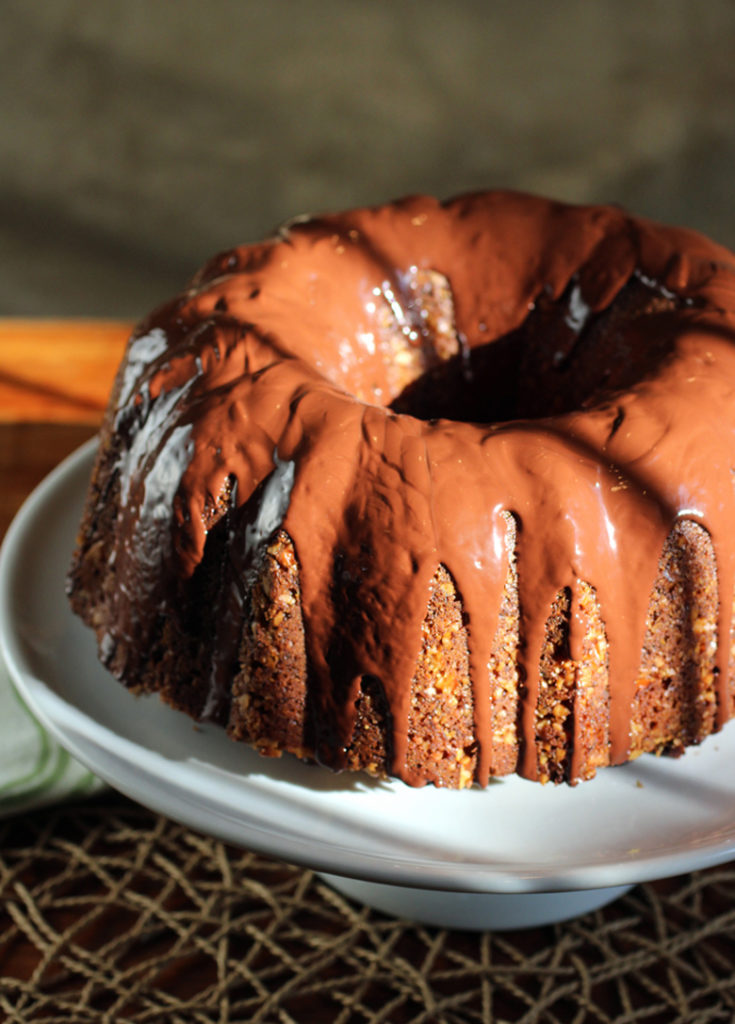
Big cake?
Big yeah!
We’re talking three sticks of butter and six eggs in this baby.
Could there be a more apt treat for Father’s Day than “Big Daddy’s Cake”?
This substantial cake — full of nuts, a “tunnel” of chocolate inside, and glazed with still more chocolate — is from the new cookbook, “Chocolate Is Forever: Classic Cakes, Cookies, Pastries, Pies, Puddings, Candies, Confections, and More” (Little, Brown and Company), of which I received a review copy. It’s by the legendary self-taught baker Maida Heatter, who passed away in 2019, but not before inspiring a legion of bakers, both amateur and professional ones.
This collection of nearly 100 chocolate-centric recipes features everything from “Sour Cherry Chocolate Torte” and “Hungarian Seven-Layer Cake” to “Key West Chocolate Treasures,” “Viennese Chocolate Ice Box Cookies,” and “Chocolate-Chip-Cognac-Coffee Ice Cream.”
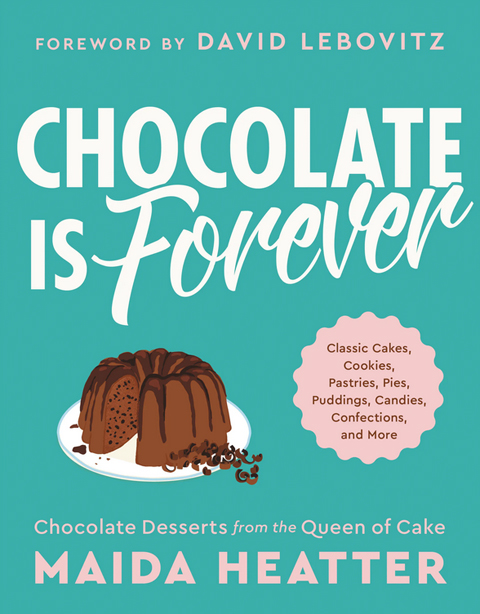
This particular cake will bake up to the very top of a regular Bundt pan, so be sure to use a large-sized classic one, not one of the smaller, more fancifully designed ones.
The pan gets buttered and strewn with chopped pecans all over. I actually used walnuts, because that’s what I had on hand. Then, the batter gets poured in.
Here’s where it got a little tricky — at least for me. With the back of a spoon, you’re supposed to create a trench in the batter, then pour in melted chocolate mixed with a little cream and strong coffee. The problem was that the batter, while thick, does not stay in place on its own. So, as you make the trench, it will start to close up on itself quite quickly, making it a race against the clock to fill it with the melted chocolate before it closes up.
If I had to do it over again, I think I would have transferred the chocolate into a measuring cup with a spout. Then, instead of carving out the entire trench first before filling with chocolate, I would do the two things simultaneously. With one hand, I’d start to create the trench, while with the other hand, quickly pour the chocolate sauce into the depression as it’s made before it had a chance to close up at all. I added that suggestion to the recipe. You could also try placing half the batter in the pan, adding a layer of the melted chocolate, then topping it with the remaining batter, to see how that turns out.
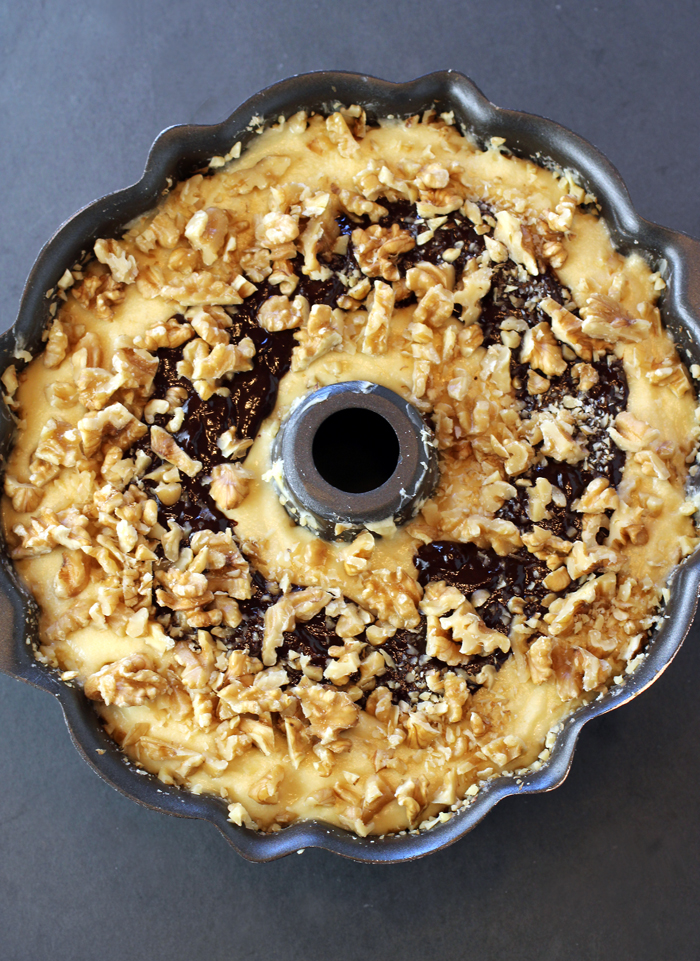
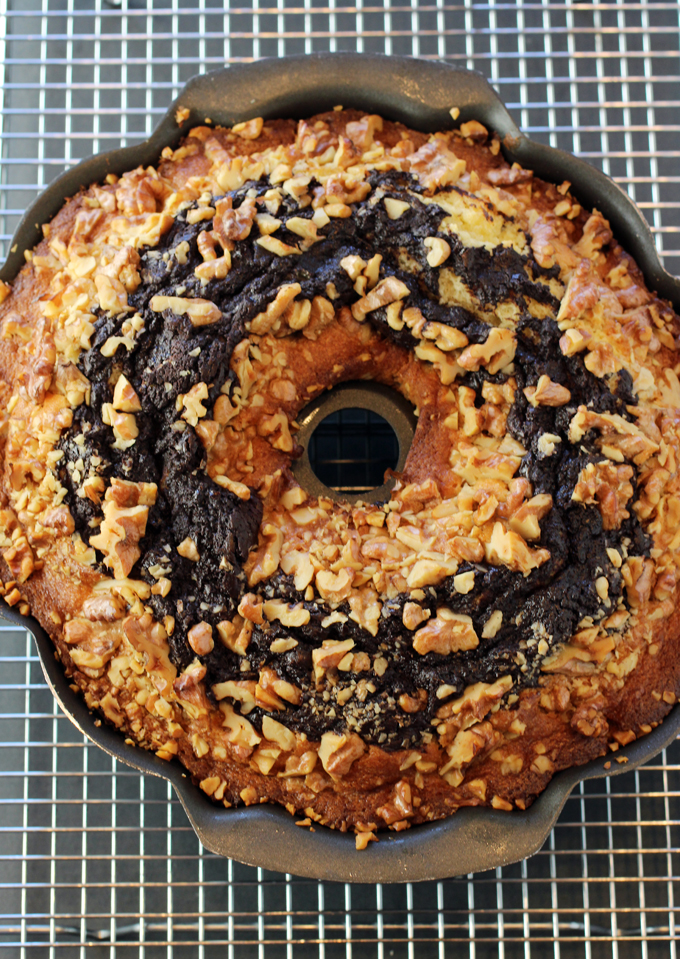
Since I only came up with the two-handed approach in hindsight, I had to contend with an uncooperative trench. In theory, because of the way a cake rises in a Bundt pan as it bakes, that trench of chocolate should have sunk down into the cake, creating a tunnel of chocolate in the center.
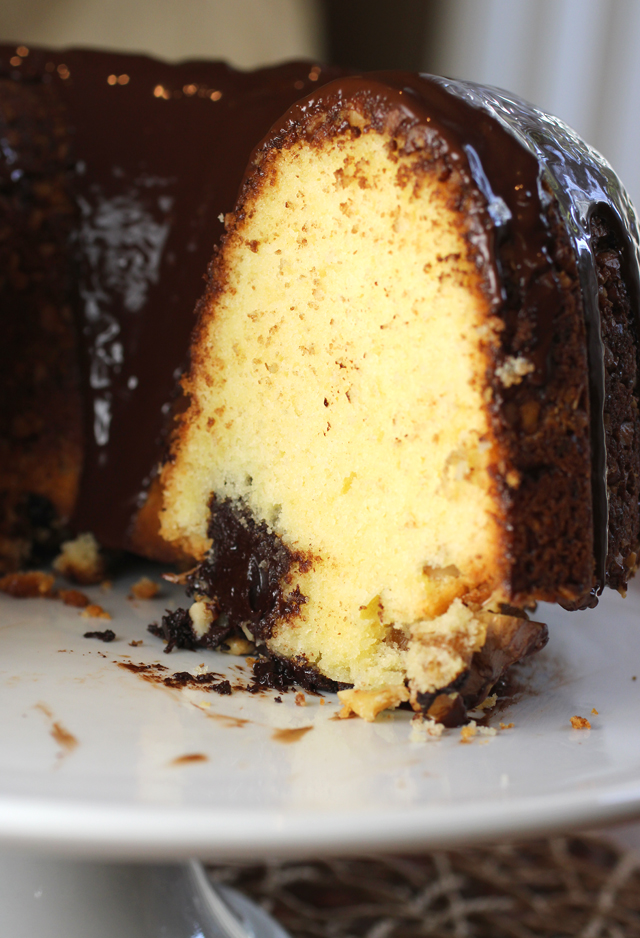
Mine, however, ended up more like a shallow moat at the bottom of the cake (when you invert it to serve), meaning that my trench of chocolate didn’t move at all from where it started out.
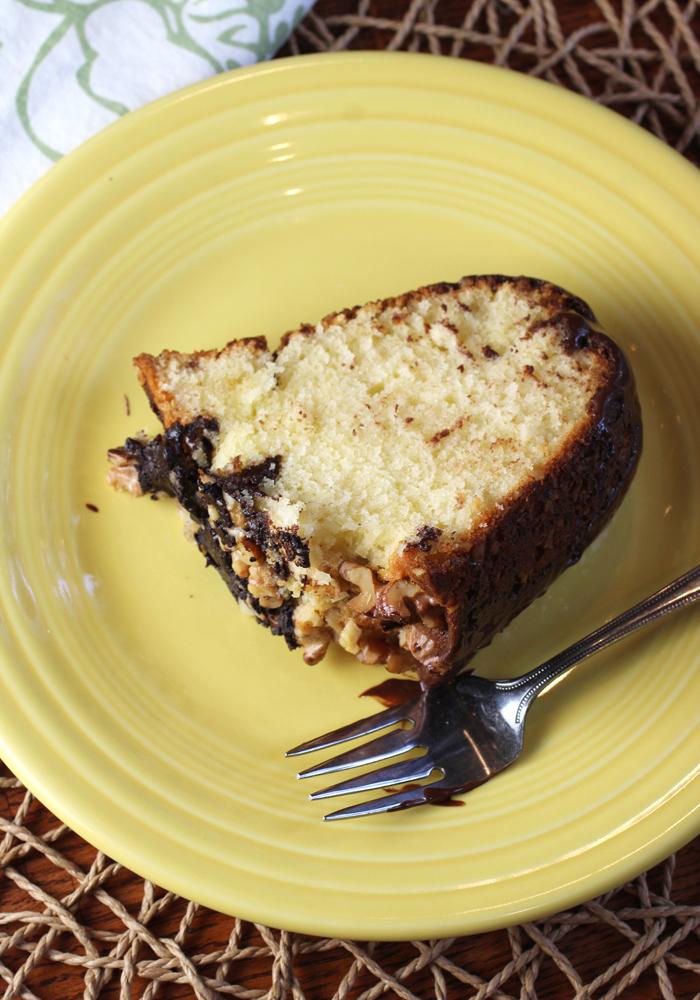
That part may have been a fail, but the cake itself certainly was not. This is a moist, very rich cake with a big buttery taste. It has a tight crumb and wonderful crisp ridges from the Bunt pan. The veil of toasty, crunchy nuts all over adds a lovely texture. The chocolate glaze and chocolate center — OK, shallow moat in my case — add more lushness, as well as introduce a hint of cocoa bitterness as a counterpoint to all the buttery richness.
This is a Big Daddy of a cake for sure. And what father wouldn’t fall for that?
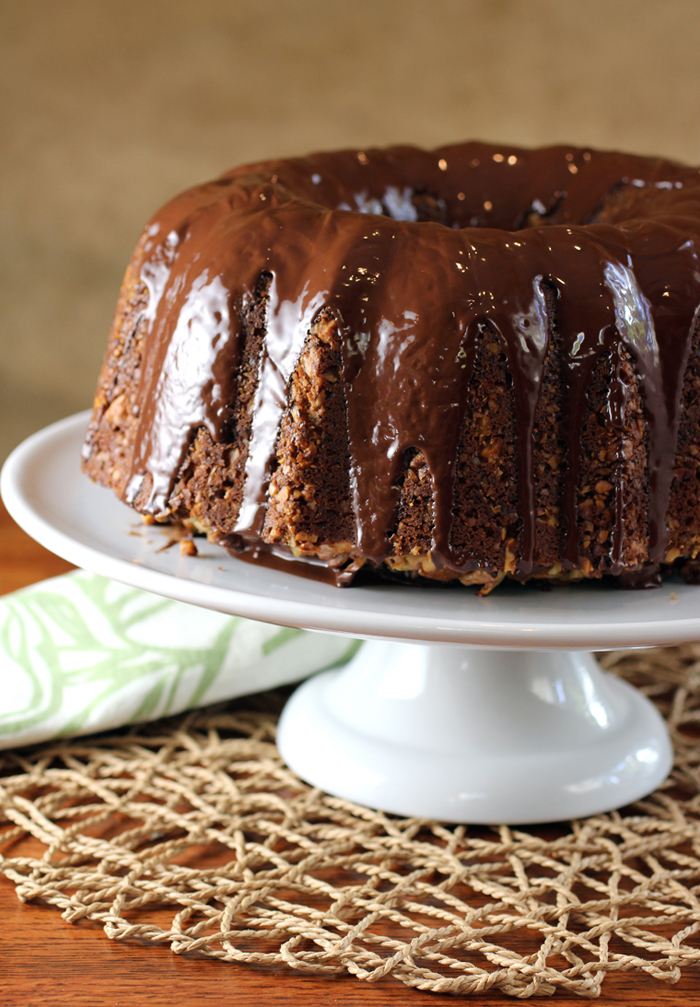
Big Daddy’s Cake
(Serves 12)
7 ounces (2 cups) toasted pecans or walnuts
4 cups sifted all-purpose flour
2 teaspoons baking powder
1 teaspoon salt
6 ounces semisweet chocolate
3 tablespoons hot water or strong coffee (2 to 3 teaspoons instant coffee in 3 tablespoons water)
3 tablespoons heavy cream
12 ounces (3 sticks) unsalted butter
1 1/2 teaspoons vanilla extract
1/4 teaspoon almond extract
2 1/4 cups sugar
6 large eggs
1 1/4 cups milk
Big Daddy’s Glaze:
6 ounces semisweet chocolate
2 teaspoons solid vegetable shortening (e.g. Crisco)
Adjust a rack one-third up from the bottom of the oven and preheat the oven to 350 degrees. Generously butter a 10-inch Bundt pan or any other fancy tube pan with a 12- to 14-cup capacity (do this even if it has a nonstick finish).
Coarsely break up half the pecans or walnuts and set them aside to sprinkle on the batter just before baking. Chop the remaining cup of pecans finely. (Do it on a large board with a long, heavy chef’s knife — the pieces will be uneven, but aim for pieces about the size of rice.)
Place the finely chopped pecans in the buttered pan, turn the pan and shake it from side to side to coat it completely with the nuts. Invert the pan over paper and allow loose nuts to fall out. Then, with your fingers, sprinkle those loose nuts into the bottom of the pan and set aside.
Sift together the flour, baking powder, and salt and set aside.
Break up or chop the chocolate coarsely and place it in the top of a small double boiler over hot water on moderate heat. Add the water or coffee. Cover the pan and cook until the chocolate is melted. Remove the top of the double boiler from the heat and stir the chocolate briskly with a small wire whisk until smooth. Add the cream and whisk again until smooth. Set aside.
Beat the butter in the large bowl of an electric mixer until soft and smooth, then beat in the vanilla and almond extracts and the sugar and continue to beat for about 2 minutes. Add the eggs one at a time, scraping the bowl as necessary, and beating until thoroughly incorporated after each addition. On low speed, gradually add the sifted dry ingredients in three additions alternately with the milk in two additions. (After adding the milk, and even after adding the dry ingredients, the mixture will look curdled — it is OK.)
Turn the batter into the prepared pan and smooth the top. With the bottom of a large spoon, form a trench around the middle of the cake (about 1/2 inch deep and 1 1/2 inches wide). Stir the prepared chocolate mixture and spoon it into the trench, keep away from the sides of the pan. (Alternate method: The trench will start closing up after you create it with spoon. As such, you may want to transfer the chocolate mixture into a glass measuring cup with a spout. With one hand, use the spoon to start making the trench, while with the other hand, simultaneously begin pouring the chocolate into the depression as you create the trench before it closes up too much.)
With your fingertips, sprinkle the reserved coarsely broken pecans or walnuts all over the top of the batter (They should touch the sides of the pan).
Bake for 50 to 55 minutes, then cover the top of the pan loosely with foil to prevent over-browning. Continue to bake for 15 to 20 minutes (total baking time is 1 hour and 5 to 15 minutes), until a cake tester inserted gently in the middle of the cake comes out clean. (During baking the top will form a deep crack — it is all right.)
Let the cake cool in the pan for 20 minutes. Then, cover it with a wide, flat cake plate and, holding the pan and the plate firmly together, turn them both over. Be careful while doing this — the cake is very heavy. Get a good secure grip on the cake pan with a pot holder; the other hand should be over the middle of the plate with your fingers spread apart for support. Remove the pan. Let the cake stand until cool.
To make the glaze: Break up or coarsely chop the chocolate and place it with the shortening in the top of a small double boiler, uncovered, over hot water on moderate heat. Stir occasionally until melted and smooth.
Pour the glaze over the opt of the cake. Then smooth the top a bit, allowing a small amount of the glaze to run down into the grooves of the cake. Let stand at room temperature and serve at room temperature.
Adapted from “Chocolate is Forever” by Maida Heatter
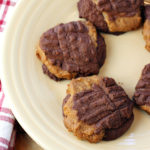
Another Maida Heatter Recipe to Enjoy: Chocolate and Peanut Butter Ripples

I am all but hooting at the creative terminology you’ve come up with for this one, Carolyn. I wonder if a Google search for “Moat Cake Baking” will direct people to this blog post. If not now, surely soon.
I’d vote for your suggested “pour half then layer in the chocolate river before topping off with remaining batter” technique. Since I’m sure you will appreciate reports from readers on what works, I will sacrifice a month’s worth of calories to experiment with this one. Stay tuned!
Carroll: You slay me! LOL Yes, I wonder if I’ve hit the SEO jackpot with “moat cake”! Probably not. But I eagerly await your report back on your attempt with this divine cake. 😉
I made this cake 02/06/22. IMO it’s basically a pound cake, that takes 4 hours to make. The chocolate did not form a ‘goey’ trench at the bottom.
Madia has some much better cakes.
Hi Doug: Yes, as noted in my post, I had trouble trying to create that supposed trench of chocolate. And you’re correct, the cake is much like a pound cake with its rich, buttery, and heavier texture. While I see it wasn’t your favorite, I hope you did at least enjoy the cake after making it.
Maida’s both orange cake and lemon cake – both glazed – are really good.
Hi Douglas: I love a great citrus cake. Thanks for the recommendations. I will have to put those on my must-bake list. 😉